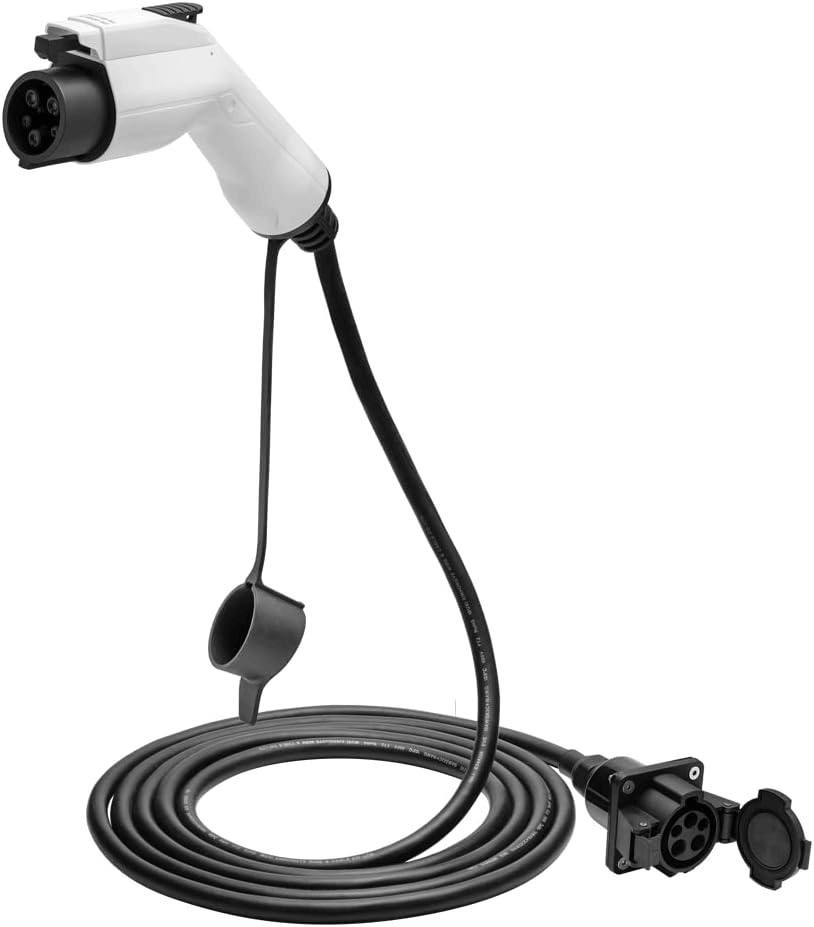As electric vehicles (EVs) continue to gain traction around the world, reliable and standardized EV charging accessories becomes essential. One area that often causes confusion—especially for new EV owners or those traveling between countries—is the variety of EV charging cable types. Type 1, Type 2, and Type 3 EV charging cables each serve specific regional needs and technical setups. This guide breaks down what makes these electric car charging cables different and which one might apply to your EV.
Type 1 Charging Cable: A North American Standard
The Type 1 EV charging cable, also known by its technical name SAE J1772, is primarily used in North America and parts of Asia. It has a 5-pin layout and supports single-phase AC charging, which limits its maximum power output to about 7.4 kW.
Type 1 electric car charging cables are typically found on early-generation EVs like the Nissan Leaf (first gen), Mitsubishi Outlander PHEV, and some versions of the Kia Soul EV. While still common in older U.S. and Japanese models, Type 1 EV charging cable is slowly being replaced by newer standards that support faster and more flexible charging.
Key points:
- Region: North America, Japan, South Korea
- Max Power: 7.4 kW
- Phase: Single-phase only
- Trend: Declining usage, mostly in legacy systems

Type 2 Charging Cable: The European and Global Favorite
Type 2 EV charging cable, officially known under the IEC 62196 standard, was developed in Europe and is now the dominant charging connector in most regions worldwide. With a 7-pin design, it supports both single-phase and three-phase AC power. This allows for significantly faster charging—up to 22 kW with AC, and even more through combined charging systems (CCS).
Type 2 EV charging cable is used by nearly all new EVs sold in Europe, including models from Tesla, BMW, Audi, Volkswagen, and Hyundai. It is also the most commonly found plug at public charging stations across Europe and is becoming increasingly common elsewhere.
Key points:
- Region: Europe and growing globally
- Max Power: 22 kW or more
- Phase: Single- and three-phase compatible
- Trend: Rapid adoption as the default standard

Type 3 Charging Cable: Once Common, Now Rare
Type 3 charging cable were developed primarily for public installations in France and Italy. They include shutter mechanisms to comply with local safety regulations, which makes them bulkier and more complex than Type 2 EV charging cable. Despite these safety features, Type 3 charging cable has seen little adoption outside of those regions and is now largely obsolete. Most modern public stations in France have already transitioned to Type 2 EV charging cable.
Key points:
- Region: France, Italy
- Max Power: Around 22 kW
- Phase: Single and three-phase
- Trend: Phased out in favor of Type 2

Quick Comparison Table
| Feature | Type 1 | Type 2 | Type 3 |
|---|---|---|---|
| Region | US / Asia | Europe / Global | France / Italy |
| Max Power | 7.4 kW | 22 kW+ | ~22 kW |
| Phase Support | Single | Single / Three | Single / Three |
| Market Trend | Declining | Growing | Obsolete |
Conclusion
Among the three, Type 2 EV charge cable has clearly emerged as the global standard, thanks to its flexibility, speed, and broad compatibility. For EV owners, understanding which cable your vehicle uses—and what’s available in your region—can save a lot of time and frustration. While adapters and combo systems exist, planning around your EV’s charging port is still key to ensuring reliable daily use.
FAQ
Can I use a Type 2 charging station cable if my car has a Type 1 port?
Yes, but you’ll need a compatible adapter. These are widely available and allow for AC charging, although fast-charging may be limited.
Is Type 2 EV charging cable compatible with fast charging?
Yes. Type 2 EV charging cable supports up to 22 kW with AC, and when used with a CCS (Combined Charging System) plug, it can handle much higher power levels with DC.
Why does Type 3 EV charging cable still exist if it’s being phased out?
Some older public stations in France and Italy still use Type 3 EV charging cables. However, most are being upgraded to Type 2 EV charging cables for standardization and compatibility reasons.
Can Type 2 EV charging cables be used internationally?
In most cases, yes—Type 2 EV charging cable has become the default across Europe and is increasingly common in Asia and other markets. Just make sure the local voltage and plug configurations are compatible with your EV.

